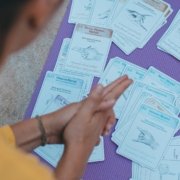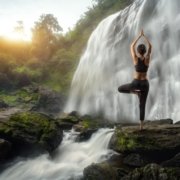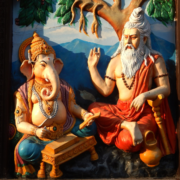Our true Being, purusha, is ultimately beyond all description because it is beyond the mind and the realm of prakriti. We can, however, gain a sense of our inner Being by recognizing and cultivating its essential qualities. These qualities are said to be sixteen which represents the number of petals of the throat chakra. 16 is described as a perfect number because it represents the perfect harmony between the moon’s waxing and waning. All the numbers of the petals of the chakras culminate in 16:
First chakra = 4 petals; Second chakra, 4+2=6 petals; Third chakra, 6+4=10 petals, Fourth chakra, 10+2=12 petals, Fifth Chakra, 12=4=16 petals, Sixth chakra = 2 petals remaining. It is the throat chakra where the sixteen limiting tendencies related to the conditioned personality are seen, questioned, and released and also where the sixteen qualities of authentic Being are integrated, allowing us to speak our truth from our inner Being rather than the conditioned personality.
-
Changelessness – avyakta
Within the realm of prakriti, everything is in a process of constant change, but the observer, our inner being, which has always been and always will be, is primordial and unchanging, avyakta. To experience this quality, place your hands in Adhi mudra and take six breaths, allowing this quality to blossom from within and permeate your entire being as you chant,
Om Avyakta Devaya Namaha.

2. Wholeness – purnatvam
Within the realm of prakriti, the results of our activities and our perception of our own being are seldom whole or complete and are often subject to feelings of inadequcy, fefectiveness or failure. In our interactions in our surroundings, it seems there is always something that we want to have, do or change within ourselves or in our surroundings, or both in order to feel complete. In contrast, our inner Being is naturally whole and complete, purnatvam, so that we don’t sense a compulsive need to do or achieve in our surroundings. Also, when we do make plan and organize projects, we are less projects attached to the results and more attentive to the process of learning that occurs along the journey.
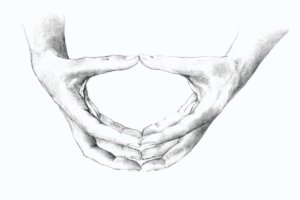
To experience this quality, place your hands in Hakini mudra and take 6 breaths, allowing this quality of wholeness to blossom from within and permeate your entire being as you chant Om Purnatvam Devaya Namaha.
-
Naturalness – sahaja.
Within the realm of prakriti, it is common to sense that we are not completely comfortabel or that we cannot truly be ourselves or even that we are living a life planned for us that is not truly our own. As we align with our inner being, we experience a naturalness, sahaja, in living as if we are always in the right place, at the right time and can be completely relaxed and natural just as we are.
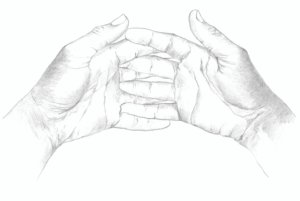
To experience this quality, place your hands in Ushas mudra and take 6 breaths, allowing this quality of naturalness to blossom from within and permeate your entire being as you chant, Om Anuthana Devaya Namaha.
- intrinsic joy – mudita
Within the realm of prakriti, satisfaction and happiness are largely dependent on our surroundings. As we unite more completely with our inner Being, we discover an inner spring of joy and peace that wells up from within us and overflows into our surroundings. This inner spring provides joy and satisfaction ongoingly and is especially important when we face obstacles and challenges, allowing us in meeting them more objectively and with a knowing that our inner peace prevails no matter what is happening in our surroundings. This inner joy is also important inradiating the energy of cheerfulness and good humor that are reflections of inner Being into our surroundings to support others on the journey of awakening.
To experience this quality, place your hands in Hansi mudra and take 6 breaths, allowing this quality of intrinsic joy to blossom from within and permeate your entire being as you chant, Om Mudita Devaya Namaha
-
Lightness – laghiman
At the level of the conditioned personality, tension and resistance are often the result of the constant tug of war between our perceived needs and our perceived capabilities and possibilities. This often results in stress and an inner and outer atmosphere of density and heaviness. Under the effects of stress, there is a tendency to identify with the limited personality and take things, even little things, seriously and personally, resulting in even more heaviness, stress, and subsequent suffering. This heaviness and stress are an important factor in the development of body-mind disease. As we align with our inner Being, we a take wider view of interactions and situations in our surroundings, recognizing that they exist to guide us along our journey by showing us the core beliefs that are the cause of suffering. Within this wider perspective, we release the stress and heaviness that are the cause of dis-ease allowing us to live with lightness and ease and a sense of playfulness even when situations are challenging.
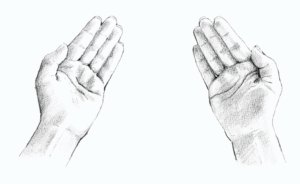
To experience this quality, place your hands in Hastaphula mudra and take 6 breaths, allowing this quality of lightness and ease to blossom from within and permeate your entire being as you chant, Om Laghiman Devaya Namaha
-
Equanimity – samatva
At the level of the conditioned personality, life can often seem like a roller coaster where we are either going up or coming down with only brief moments of balance in between. As we align with our inner Being, we discover a place of deep inner peace and equanimity like being in the depths of the sea where the storms that rage on the surface are barely felt and no linger have the power to throw us off our center. With greater centering and equanimity, any unforeseen challenge that arises is seen as an opportunity to recognize and dissolve any limiting core beliefs that keep us bound to the limited personality. And, even when we lose our balance, we recover more quickly.

To experience this quality, place your hands in Dhyana mudra and take 6 breaths, allowing this quality of equanimity to blossom from within and permeate your entire being as you chant, Om Samatva Devaya Namaha.
-
Life purpose – Svadharma
At the level of the conditioned personality, confusion as to our life purpose and meaning is much more common than certainty. As we unite with our inner Being, we gain a knowing of who we are beyond all theory and questioning, and also recognize this knowing as our life purpose and meaning. With this sense of meaning, we are guided to unfold our unique talents and possibilities which, in one form or another, serve the entire journey of huamnity toward its destiny in the form of Self-knowledge and spiritual awakening.
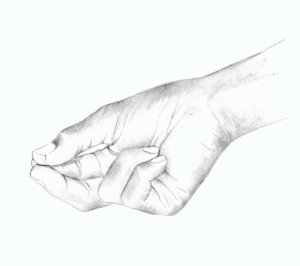
To experience this quality, place your hands in Kubera mudra and take 6 breaths, allowing this quality of knowing your life purpose and meaning to blossom from within and permeate your entire being as you chant, Om Svadharma Devaya Namaha.
-
Compassion – Karuna
Within the realm of prakriti, we tend to frame all experiences and interactions within the lens of our own limited conditioning. As we align with our inner Being, we cultivate compassion which is the ability to see situations through the eyes of others; to see life as other see it. With this vision we see others suffering and understand intuitively the conditioning that brought this suffering into being. We also see that the core intention of others, even when their level of consciousness is limited, is not to create harm or negativity but only to find happiness and avoid suffering within the limits of their understanding. We also understand that when others act negatively, it is not directed toward us personally, but only reflections of their own limitations and misperceived needs and priorities that get projected onto anyone that happens to be in their way. We can also recognize that these people’s suffering is real and that we too have suffered in this way in the past and acted unconsciously. We also see that other people’s beliefs, just like our own, are not fixed, for each individual always has the capacity to transform themselves and live more consciously. Finally, we recognize that the best way to support other in changing their attitudes and tendencies is not through criticism or advice, but through our own example of living in peace and equanimity.
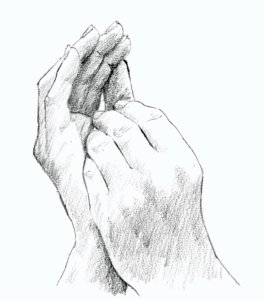
To experience this quality, place your hands in Karuna mudra and take 6 breaths, allowing this quality of compassion to blossom from within and permeate your entire being as you chant Om Karuna Devaya Namaha.
9.Discernment – Viveka
At the level of the limited personality, there is a tendency to identify with our conditioned ways of seeing and being, even when we know that they don’t offer the possibilty of freedom, happiness and peace, but instead tend to perpetuate patterns of limitation and suffering. As our recognition of our inner Being as our true identity becomes more complete, we are able to discern clearly between the klishta vrittis, the thoughts, feelings and beliefs that cause suffering, and the aklishta vrittis, the movements within consciousness that lead to fredom and awakening. Limiting vriitis that lead to suffering will not dissolve quickly because of the depth of our conditioning, but, through discernment, we develop the ability to witness them without reacting unconsciously. Witnessing gradualy reduces the power of these pain producing vrittis, allowing us to live with greater freedom and autonomy.

To experience this quality, place your hands in Citta mudra and take 6 breaths, allowing this quality of compassion to blossom from within and permeate your entire being as you chant Om Viveka Devaya Namaha.
-
Surrender to the Lord – Ishvara Pranidhana
Within the realm of prakriti, we tend to rely on our skills and abilities at the level of the personality to find, happiness, success and meaning. Since prakriti is goverend by the three gunas and therfore in a characterized by mutability and uncertainty, the reults are always mixed and often lead to suffering when our plans and expectaions do not materialize as expected. As we align with our inner Being, we recognize it as a reflection of the intelligence at the heart of all things, Ishvara, the Source Energy. By aligning with the Source, we transcend the the ups and downs within the realm of the gunas and recognize that the happines, success and peace we seek are the very nature of our own Being as reflections of the infinite nature of the Source Energy. Through this alignment with Source, we enter into a state of Divine grace, which both guides and protects us along our journey. Within the light of grace, we find a synchrony with universal rhythms and become co-creators within our surrounding to support the greater destiny of humanity as spiritual awakening into being. We also use our challenges and difficulties as ways of seeing where we are still clingin onto the limited personality so that we can surrender ever more deeply.
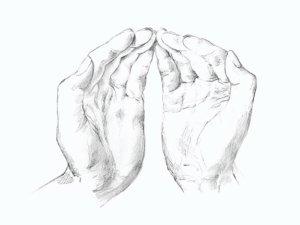
To experience this quality, place your hands in Pushpanjali mudra and take 6 breaths, allowing this quality of surrender to blossom from within and permeate your entire being as you chant Om Ishvara Pranidhana Devaya Namaha.
-
Inner Silence – Antar Mauna
At the level of the conditioned personality, the level of contentment and peace we encounter is usually dependent on circumstances in our surroundings. In terms of inner silence, most struggle in meditation for a considerable length of time to find moments of silence. Through ever deepening surrender and grace, we naturally begin to experience inner silence and inner peace through aligning with our inner being which is simultaneously union with the Source Energy. This silence and peace is beyond the mind and the realm of prakriti and therefore more immune to the ups and downs in our surroundings.

To experience this quality, place your hands in Kurma mudra and take 6 breaths, allowing this quality of Inner Silence to blossom from within and permeate your entire being as you chant Om Antar Mauna Devaya Namaha.
-
Omniscience – Sarvavidya
Within the realm of prakriti, we tend to learn compartamentally, mastering pieces of information on specific themes. Even when we become Phd.s, our knowledge in any area is is limited. In terms of the larger picture of existence, the more science discovers, the more question arise and the scope of our understanding is dwarfed by the infinity of creation. For example, the more physicas adavances, the more the definition of material creation resembles that which Yoga has ascertained intuitively, and endless field of energy whose manifestaion as materiality is almost nothing! As we align with our inner Being as a reflection and extension of the Source energy, we cultivate a differeny type of knowlegd in the form of an intuitive knowing of the essence of all things, of the laws that govern creation itself and of the Source that underlies these. This knowing provides alsolut sertaint about whowe are, the nature of created things and our life purpose and destiny in the form of spiritual awakening.

To experience this quality, place your hands in Bhairava mudra and take 6 breaths, allowing this quality of omniscience to blossom from within and permeate your entire being as you chant Om Sarvavidya Devaya Namaha.
-
Limitlessness – Ananta
At the level of the conditioned personality, limitation is an ever-present reality. We almost never achieve our wants and needs completely. And, by our very human nature, as soon as we do attain something, there is a tendency to want more or better or different. Moreover, even when we have all we need at a practical level, there are inner patterns of defectiveness and deficiency that continue to create a sense of limitation and subsequent suffering. As we align with our inner Being, we recognize that the true nature of both the creator and the creation is limitlessness. This even applies to our understanding of the universe where science often seeks to find frontiers and boundaries but where the reality just keeps expanding. As we become one with the limitless creative, we experience it as the nature of our own Being in samadhi. We also gradually integrate it into daily living where we come to understand that our capacity for living fully and joyfully is also limitless. Simultaneously, even at the level of material manifestation, we come to see that our ability to unfold our unique talents and possibilities for the good of all beings is also limitless.

To experience this quality, place your hands in Ananta mudra and take 6 breaths, allowing this quality of limitlessness to blossom from within and permeate your entire being as you chant Om Ananta Devaya Namaha.
-
Self-mastery – Vashitvam
At the level of the conditioned personality, there is a strong tendency to identify with and be subject to a wide range of emotions, drives and instincts related to likes, dislikes, and perceived needs. Emotional patterns such as a sense of loss, shame, neediness, or grief can encompass and characterize our entire personality. As we align with our inner Being, we recognize that these tendencies exist only in our mind and in patterns of conditioned beliefs that have no basis in reality. We therefore cultivate the ability to witness these patterns of negativity, no matter how powerful they may seem, without identifying with them as “me.” Through this commitment to no identify with patterns that ultimately cause suffering, we gradually develop autonomy, the freedom to choose our thoughts, emotions and beliefs beyond the realm of our conditioning which is the essence of self-mastery.

To experience this quality, place your hands in Kaleshvara mudra and take 6 breaths, allowing this quality of limitlessness to blossom from within and permeate your entire being as you chant Om Vashitvam Devaya Namaha.
-
Unconditional Love – Prema
At the level of the conditioned personality, love is usually dependent on our surroundings and in reciprocity. When we receive affection, nurturance and caring, it is easy to respond in ways that are loving. When this caring is not present, we rend to react, and the source of love can quickly transform into a source of hurt and pain. As we align with our inner Being, we recognize it as our very nature in the form of caring and positivity. Love is the very essence of creation when we release all the conditioning that keeps us searching for satisfaction and happiness in our surroundings. At a practical level, this wider experience of love permeates our relationships so that we are able to see everyone wants the love and happiness that is a reflection of their true Being, who they are in reality. In the end, love is simply a home coming. Through this recognition, we can avoid the neediness and codependency that keeps us from loving unconditionally.

To experience this quality, place your hands in Padma mudra and take 6 breaths, allowing this quality of unconditional love to blossom from within and permeate your entire being as you chant Om Prema Devaya Namaha.
-
Spiritual Freedom – Moksha
Through the cultivation and unfolding of all the other qualities, we naturally experience freedom as our very nature; a sense that we are no longer bound either to our own conditioning or to situations in our surroundings. We are also free from fear of deathj as we recognize that our inner being, as one with the total, has always been and will always be. In complete freedom and imortality, we also recognize ourselves as one with the intelligence at the heart of all things, Ishvara, the Source Energy. Challenges may continue to arise, but we deal with them objectively without the need to take anything personally. Within this lived experience of freedom, which we recognize as our life purpose and meaning, our energy is freed from patterns of resistance and anxiety, allowing us to support all beings on the journey of awakening.

To experience this quality, place your hands in Jnana mudra and take 6 breaths, allowing this quality of spiritual freedom to blossom from within and permeate your entire being as you chant Om Moksha Devaya Namaha.
Por Joseh Le Page

Foto capa: Laion Cantarelli


